Themed collection Editor’s Choice: Functional MOFs and COFs

Recent advances in metal–organic frameworks for gas adsorption/separation
This review summarizes the representative works of MOFs for gas adsorption/separation in recent years, analyses the host–guest interaction, structure–performance relations, and the adsorption/separation mechanism.

Nanoscale Adv., 2022,4, 2077-2089
https://doi.org/10.1039/D2NA00061J
Process of metal–organic framework (MOF)/covalent–organic framework (COF) hybrids-based derivatives and their applications on energy transfer and storage
The fossil-fuel shortage and severe environmental issues have posed ever-increasing demands on clean and renewable energy sources, for which the exploration of electrocatalysts has been a big challenge toward energy transfer and storage.
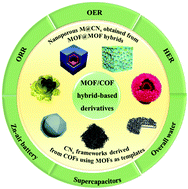
Nanoscale, 2022,14, 1679-1699
https://doi.org/10.1039/D1NR07614K
Emergent electrochemical functions and future opportunities of hierarchically constructed metal–organic frameworks and covalent organic frameworks
Hierarchically constructed metal–organic frameworks and covalent organic frameworks toward emergent electrochemical applications.

Nanoscale, 2021,13, 6341-6356
https://doi.org/10.1039/D0NR09167G
Photoresponsive porous materials
Integration of molecular photoswitches in porous materials i.e. MOFs, COFs, PAFs provides responsive materials with a variety of functions ranging from switchable gas adsorption to macroscopic actuation.
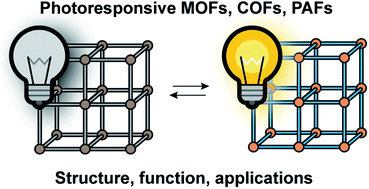
Nanoscale Adv., 2021,3, 24-40
https://doi.org/10.1039/D0NA00647E
Luminescent lanthanide metal–organic framework nanoprobes: from fundamentals to bioapplications
This minireview summarizes the recent advances in the emerging field of luminescent Ln-MOF nanoprobes, covering from fundamental insights to bioapplications.
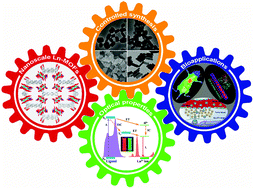
Nanoscale, 2020,12, 15021-15035
https://doi.org/10.1039/D0NR03373A
Recent advances in pristine tri-metallic metal–organic frameworks toward the oxygen evolution reaction
This minireview summarizes the synthesis strategies to access trimetallic MOFs and their catalytic performances toward the oxygen evolution reaction.

Nanoscale, 2020,12, 4816-4825
https://doi.org/10.1039/C9NR10109H
Metal organic framework derived porous carbon materials excel as an excellent platform for high-performance packaged supercapacitors
This review systematically sums up the design principles and strategies for MOF precursors and discusses the relationship between MOF precursors and the target porous carbon for the accurate architecture of high-performance supercapacitors.
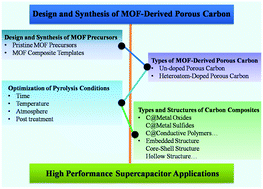
Nanoscale, 2021,13, 5570-5593
https://doi.org/10.1039/D1NR00160D
2D metal–organic framework-based materials for electrocatalytic, photocatalytic and thermocatalytic applications
2D MOF-based materials with unique characteristics have great potential in various electrocatalytic, photocatalytic and thermocatalytic applications.
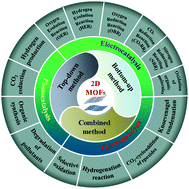
Nanoscale, 2021,13, 3911-3936
https://doi.org/10.1039/D0NR09064F
Recent development of two-dimensional metal–organic framework derived electrocatalysts for hydrogen and oxygen electrocatalysis
Developing efficient and low-cost electrocatalysts with unique nanostructures is of great significance for improved electrocatalytic reactions, including the hydrogen evolution reaction (HER), oxygen evolution reaction (OER), and oxygen reduction reaction (ORR).

Nanoscale, 2020,12, 18497-18522
https://doi.org/10.1039/D0NR04458J
Development of biological metal–organic frameworks designed for biomedical applications: from bio-sensing/bio-imaging to disease treatment
This review introduces biological metal–organic frameworks (bio-MOFs) designed and prepared using biological ligands for bio-sensing, bio-imaging, and drug delivery.

Nanoscale Adv., 2020,2, 3788-3797
https://doi.org/10.1039/D0NA00557F
Nanoscale covalent organic frameworks as theranostic platforms for oncotherapy: synthesis, functionalization, and applications
We outline the latest developments in COF-based nanomedicines for use in oncotherapy, including material synthesis, nanocrystallization, and functionalization strategies, as well as their therapeutics applications.
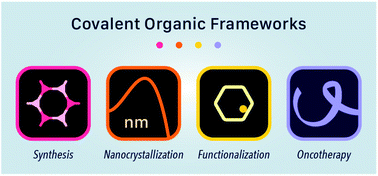
Nanoscale Adv., 2020,2, 3656-3733
https://doi.org/10.1039/D0NA00537A
Flexible supercapacitor electrodes using metal–organic frameworks
Metal–organic frameworks are emerging players in the fabrication of flexible energy storage devices to power flexible and wearable electronics.

Nanoscale, 2020,12, 17649-17662
https://doi.org/10.1039/D0NR03549A
The function of metal–organic frameworks in the application of MOF-based composites
In this review, recent progress in MOF-based composites was summarized with an effort to clarify the structure–performance relationship of MOF-based composites, with particular emphasis on the functions of MOF components for practical applications.
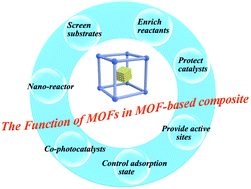
Nanoscale Adv., 2020,2, 2628-2647
https://doi.org/10.1039/D0NA00184H
Surface-coordinated metal–organic framework thin films (SURMOFs) for electrocatalytic applications
This review first summarizes surface-coordinated metal–organic framework thin films (SURMOFs) for electrocatalytic applications.

Nanoscale, 2020,12, 12712-12730
https://doi.org/10.1039/D0NR03115A
From metal–organic frameworks to porous carbon materials: recent progress and prospects from energy and environmental perspectives
Transforming MOFs into metal-free carbons is bringing the novel potential for MOFs to achieve industrialization owing to their with highly crystalline porous structures, showing great potential on the energy storage and environmental applications.
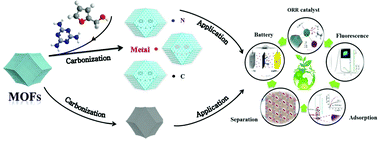
Nanoscale, 2020,12, 4238-4268
https://doi.org/10.1039/C9NR09697C
Two-dimensional metal–organic frameworks and their derivatives for electrochemical energy storage and electrocatalysis
The recent progress on the fabrication of two-dimensional metal–organic frameworks and their derivatives as well as their applications in electrochemical energy storage and electrocatalysis are reviewed.
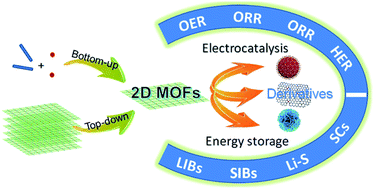
Nanoscale Adv., 2020,2, 536-562
https://doi.org/10.1039/C9NA00719A
Recent advances in two-dimensional-material-based sensing technology toward health and environmental monitoring applications
Low dimensional materials based sensors have improved the detection strategy for sensing complex substances present in environment and human body.
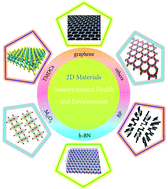
Nanoscale, 2020,12, 3535-3559
https://doi.org/10.1039/C9NR10178K
Assembling well-arranged covalent organic frameworks on MOF-derived graphitic carbon for remarkable formaldehyde sensing
A novel core–shell structured MOF-GC@COF heterostructure was synthesized with high sensing performance toward formaldehyde is presented.
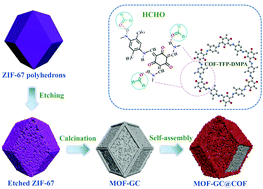
Nanoscale, 2020,12, 15611-15619
https://doi.org/10.1039/D0NR03041D
Design strategies of two-dimensional metal–organic frameworks toward efficient electrocatalysts for N2 reduction: cooperativity of transition metals and organic linkers
W3C12X12 (X = O, S, and Se) were screened as promising NRR electrocatalysts with an ultralow limiting potential.
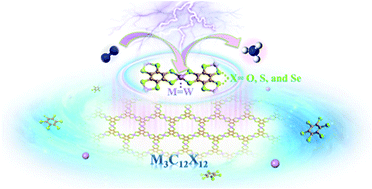
Nanoscale, 2021,13, 19247-19254
https://doi.org/10.1039/D1NR06366A
Understanding charge transport in wavy 2D covalent organic frameworks
A new wavy 2D covalent organic framework shines light on the structural factors that dominate charge transport.
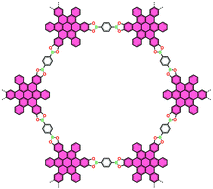
Nanoscale, 2021,13, 6829-6833
https://doi.org/10.1039/D0NR08962A
Introducing electrical conductivity to metal–organic framework thin films by templated polymerization of methyl propiolate
Conductive SURMOF-composite thin films were successfully obtained by Pd-catalyzed polymerization of methyl propiolate and deeply investigated, finding evidence for depot release effects.
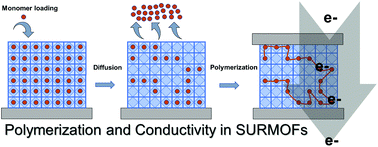
Nanoscale, 2020,12, 24419-24428
https://doi.org/10.1039/D0NR06848A
Fine-tuning of two-dimensional metal–organic nanostructures via alkali–pyridyl coordination
Fine-tuning of 2D metal–organic nanostructures is realized by alkali–pyridyl coordination.
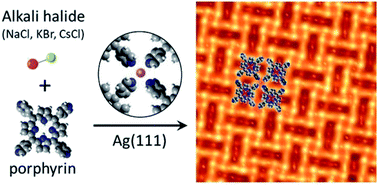
Nanoscale Adv., 2020,2, 2170-2176
https://doi.org/10.1039/D0NA00091D
A NiCo-MOF nanosheet array based electrocatalyst for the oxygen evolution reaction
Metal organic frameworks (MOFs) are excellent materials for energy storage and conversion.
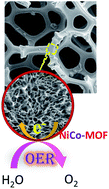
Nanoscale Adv., 2020,2, 2073-2079
https://doi.org/10.1039/D0NA00112K
In-MOF-derived ultrathin heteroatom-doped carbon nanosheets for improving oxygen reduction
Two types of discrete complexes have been encapsulated in InOF-24 by impregnation method, and are then subjected to pyrolysis with a conversion to the porous carbon material (InFeCo@CNS900).

Nanoscale, 2020,12, 10019-10025
https://doi.org/10.1039/D0NR02007A
A new perspective of lanthanide metal–organic frameworks: tailoring Dy-BTC nanospheres for rechargeable Li–O2 batteries
Nanoscaled lanthanide metal–organic frameworks (Ln-MOFs), Dy-BTC nanospheres, are explored as an O2 electrode, which demonstrate an ultrahigh discharge capacity and long cycling life.
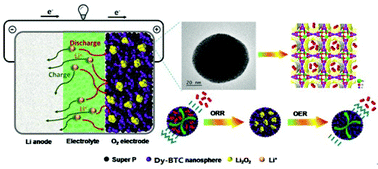
Nanoscale, 2020,12, 9524-9532
https://doi.org/10.1039/D0NR00866D
Boosting the photocatalytic CO2 reduction of metal–organic frameworks by encapsulating carbon dots
Small carbon dots as cocatalysts were loaded in MOF particles for CO2 reduction and their location effect was explored.

Nanoscale, 2020,12, 9533-9540
https://doi.org/10.1039/D0NR01696A
An electrochromic supercapacitor based on an MOF derived hierarchical-porous NiO film
Here, a hierarchical porous NiO film/ITO glass bifunctional electrode has been prepared successfully via growing MOF-74 in situ on ITO, which shows outstanding cycle reversibility, excellent capacitance, and high coloration efficiency.
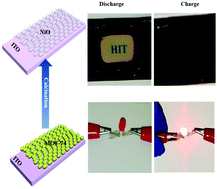
Nanoscale, 2020,12, 8934-8941
https://doi.org/10.1039/D0NR01152E
Nanostructured potassium–organic framework as an effective anode for potassium-ion batteries with a long cycle life
Novel nanostructured non-redox-metal potassium metal–organic framework, [C7H3KNO4]n, as an effective organic anode for long-cycle life OPIBs.
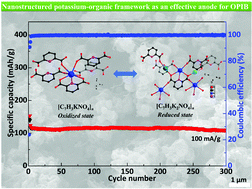
Nanoscale, 2020,12, 7870-7874
https://doi.org/10.1039/D0NR00964D
Coupling of a conductive Ni3(2,3,6,7,10,11-hexaiminotriphenylene)2 metal–organic framework with silicon nanoparticles for use in high-capacity lithium-ion batteries
A composite of Si nanoparticles and a two dimensional porous conductive Ni3(2,3,6,7,10,11-hexaiminotriphenylene)2 (Ni3(HITP)2) metal–organic framework (MOF), namely Si/Ni3(HITP)2, is suggested as a potential anode material for Li-ion batteries.
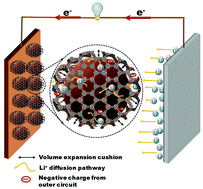
Nanoscale, 2020,12, 1629-1642
https://doi.org/10.1039/C9NR08038D
Self-templated synthesis of Co3O4 hierarchical nanosheets from a metal–organic framework for efficient visible-light photocatalytic CO2 reduction
Co3O4 hierarchical nanosheets were synthesized by a self-templated strategy and showed excellent performance towards visible-light photocatalytic CO2 reduction to CO.
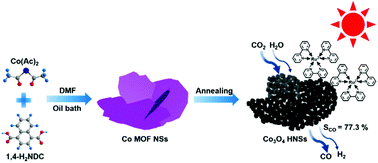
Nanoscale, 2020,12, 755-762
https://doi.org/10.1039/C9NR08669B
About this collection
Professor Paolo Samorì (University of Strasbourg, France), Associate Editor for Nanoscale and Nanoscale Advances, introduces his Editor’s Choice collection.
“Metal–organic frameworks (MOFs) and covalent–organic frameworks (COFs) have established themselves during the last few years as chemically tuneable scaffolds displaying unique structures and ad hoc physical and chemical properties that can be tailored by design. Their assembly enables the generation of highly porous structures that can, for example, host chemical species for gas and liquid purification or sensing and can host ions for energy storage and catalysis.
This online collection from Nanoscale and Nanoscale Advances highlights some of the most enlightening recent results on MOF- and COF-based functional assemblies, by providing clear evidence for their outstanding potential to address today’s societal challenges in the field of energy as well as environmental sciences.”